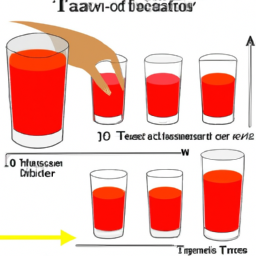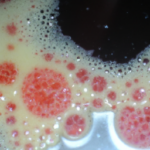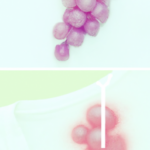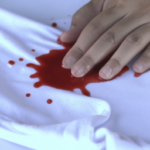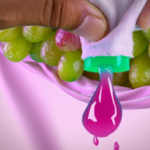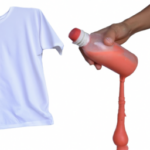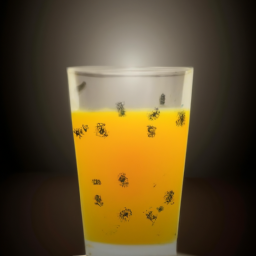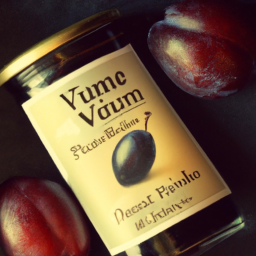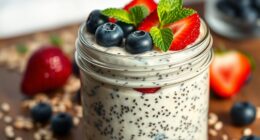As someone who appreciates fine cranberry juice and fruit punch, I have had my fair share of spills and stains on my clothes. We all understand how difficult and frustrating it can be to remove red juice stains. But fear not, as I have learned several techniques over the years for getting rid of red juice stains from clothing.
First and foremost, it’s important to act fast and blot the stain as soon as possible. The longer the stain sits, the harder it will be to remove.
Once you’ve blotted the excess juice, rinse the stain with cold water and pre-treat it with a stain remover. With a little bit of patience and elbow grease, you can have your clothes looking as good as new in no time!
So, let’s dive into the step-by-step process for removing those pesky red juice stains.
Key Takeaways
- Act fast and blot the stain to prevent it from setting in.
- Rinse the stain with cold water and pre-treat it with a stain remover.
- Different types of stains require different removal techniques (organic, protein-based, oil-based).
- Pre-treat the stain with a stain remover, baking soda paste, or vinegar solution before washing with a laundry detergent with enzymes.
Act Fast and Blot the Stain
You gotta act fast and start blotting that red juice stain before it sets in for good! Stain prevention is key here, and a quick response can make all the difference.
Don’t wait to deal with the stain later, because the longer you wait, the harder it’ll be to remove. Grab a clean cloth or paper towel and start blotting the stain gently. Avoid rubbing the stain, as this can push the juice deeper into the fibers of the fabric.
Keep blotting until you have removed as much of the juice as possible. Once you have blotted up as much juice as you can, it’s time to move on to the next step: rinsing the stain with cold water.
Rinse the Stain with Cold Water
So, now that we’ve blotted out as much of the red juice stain as possible, it’s time to move on to the next step: rinsing with cold water.
To do this, I usually soak the stained area in a bowl or sink filled with cold water for about 10-15 minutes. If I don’t have a bowl or sink available, I’ll use running water to rinse the stain out instead.
Once the stain has been rinsed thoroughly, it’s important to check for stain removal before moving on to the next step. This helps to ensure that the stain is completely gone and won’t set in further during the next step of the cleaning process.
Soak the Stain in Cold Water
Ahoy there! If you’ve found yourself with a red juice stain on your clothes, the first step to take is to give it a nice soak in some cold water.
Soaking the stain in cold water has numerous benefits for stain removal. Firstly, it helps to loosen the stain from the fabric, making it easier to remove. Secondly, using cold water prevents the stain from setting in, which can make it more difficult to remove later on.
When choosing a stain remover for different types of stains, it’s important to consider the type of fabric and the severity of the stain. For example, some fabrics may be sensitive to certain chemicals, while others may require stronger stain removers for deep-set or stubborn stains.
However, before using any stain remover, it’s always best to soak the stain in cold water first to prevent it from setting in. Once the stain has been soaked, it can then be treated with the appropriate stain remover.
Now that you’ve soaked the stain, the next step is to use running water to rinse it out completely.
Use Running Water
As the water flows over the stain, it carries away any remaining particles and leaves the fabric looking refreshed and clean. Using running water is a simple yet effective method to remove red juice stains from clothes. It is important to note that before using running water, it is essential to soak the stain in cold water as discussed in the previous subtopic. Soaking the stain in cold water helps to loosen the stain and prevent it from setting in the fabric.
Benefits of using cold water for stain removal include preventing the stain from spreading and setting in the fabric. Cold water also helps to preserve the color and texture of the fabric. To effectively use running water for stain removal, hold the fabric under a running faucet or showerhead. The water pressure helps to flush out the stain from the fabric. It is important to ensure that the water temperature is not too hot as this can set the stain and make it harder to remove.
Now that we have effectively removed the red juice stain using running water, the next step is to check for any remaining stain.
Check for Stain Removal
Now that we’ve successfully removed the stubborn red juice stain, let’s check to see if there are any remnants left behind.
Common red juice stains include cranberry, pomegranate, and grape juice, and they tend to leave behind a noticeable red or purple stain. It’s important to check for any leftover stains, especially if the fabric is light-colored or delicate.
When checking for stain removal, it’s important to keep in mind the types of fabric to avoid when dealing with red juice stains. Fabrics like silk or wool can be easily damaged when treated with stain removers, so it’s best to avoid using them.
Instead, opt for a gentle, yet effective stain remover that won’t damage the fabric. By thoroughly checking for any leftover stains and taking precautions when treating them, your clothes will look impeccable once again.
Now, let’s move on to the next step of pre-treating the stain.
Pre-Treat the Stain
First things first, you’ll want to make sure to pre-treat the red juice stain before washing your clothes. This will help loosen and lift the stain before it sets in, making it easier to remove later on.
Here are some effective methods and the best products for pre-treating red juice stains on clothes:
-
Use a stain remover: Apply a stain remover directly to the stain and let it sit for a few minutes before washing. Stain removers like OxiClean or Shout are great options for pre-treating red juice stains.
-
Make a paste: Mix baking soda and water to create a paste and apply it to the stain. Let it sit for 30 minutes before washing. This method is effective for removing tough stains.
-
Try vinegar: Soak the stained area in a mixture of equal parts vinegar and water for 30 minutes before washing. The acid in the vinegar helps break down the stain and make it easier to remove.
Now that you’ve pre-treated the red juice stain, it’s time to wash the clothes.
Wash the Clothes
After pre-treating the stain, it’s important to select a suitable laundry detergent with enzymes to break down any remaining residue and thoroughly wash the garment. When it comes to removing red juice stains, it’s best to use a detergent that’s specifically designed for stain removal. Look for one that contains enzymes, which are proteins that break down the stain’s molecules, making it easier to wash away.
While many people believe that hot water is better for removing stains, this isn’t always the case. In fact, hot water can actually set the stain, making it harder to remove. Instead, use cold or lukewarm water to wash the garment.
To ensure that the stain has been fully removed, check the garment before putting it in the dryer. If the stain is still visible, repeat the washing process. By pre-treating the stain and using the right laundry detergent, you can remove even the toughest stains, such as grass and oil.
To prevent stains from setting in the future, pre-treat your clothes before washing.
Check for Stain Removal
Make sure to inspect the garment thoroughly before putting it in the dryer to ensure that the stain has been completely removed. Stain removal techniques vary depending on the type of stain, so it’s important to identify what caused the red juice stain before attempting to remove it.
Here are some tips to help you identify different types of stains and how to remove them:
-
For organic stains such as fruits or juices, try using a mixture of vinegar and water to remove the stain. Apply the solution directly onto the stain and let it sit for a few minutes before washing.
-
For protein-based stains such as blood or sweat, use cold water to rinse the stain before applying a pre-treatment solution. Let the solution sit for a few minutes before washing in cold water.
-
For oil-based stains such as salad dressing or cooking oil, use a dish soap or laundry detergent to pre-treat the stain before washing in hot water.
By following these stain removal techniques, you can increase your chances of successfully removing the red juice stain from your clothes. If the stain persists, the next step is to try using bleach to further remove the stain.
Use Bleach
To tackle the stubborn red juice stain, you’ll want to grab some bleach and follow these steps.
First, make sure the fabric can handle bleach by checking the care label. If the label permits bleach, dilute it with water according to the instructions on the bottle.
Apply the mixture to the stained area and let it sit for 5-10 minutes. Then, rinse the fabric thoroughly with cold water to remove any bleach residue.
If the stain persists, repeat the process until it disappears. However, if you prefer bleach alternatives or are worried about the dangers of using bleach on clothes, there are other options.
For example, you can try using white vinegar or lemon juice to remove the stain. These natural remedies can be mixed with water and applied to the stain in the same way as bleach. Additionally, you can also try using a stain remover specifically designed for colored fabrics.
No matter which method you choose, always test it on a small, inconspicuous area first to make sure it doesn’t cause further damage to the fabric.
Try Natural Remedies
When it comes to getting stains out of clothes, I always like to try natural remedies before resorting to harsh chemicals.
Three of my go-to remedies for getting out tough stains are lemon juice, baking soda, and salt. Lemon juice can be used to remove stains from white clothes, while baking soda is great for getting out stubborn stains like coffee and red wine. Salt can also be used to absorb stains and prevent them from setting in.
These natural remedies are not only effective, but also safe for the environment and your clothes.
Use Lemon Juice
Squeeze some lemon juice onto the stain and gently rub it in, allowing it to sit for a few minutes before rinsing it out with cold water. Lemon juice is a natural cleaner that can help break down the red pigment in the stain.
Here are some benefits of using lemon juice for stain removal:
- It’s a natural and non-toxic alternative to harsh chemicals.
- It has a pleasant smell that can leave your clothes smelling fresh.
- It can be easily found at your local grocery store.
- It’s an effective solution for removing a variety of stains, not just red juice.
While lemon juice is a great option for removing stains, there are also alternatives to consider. For example, white vinegar can also be used to remove stains and is a great option for those with sensitive skin.
Now, let’s move on to the next subtopic and discuss how to use baking soda to remove red juice stains.
Use Baking Soda
So we’ve talked about using lemon juice to get red juice stains out of clothes, but what if you don’t have any lemons on hand? Don’t worry, because there’s another household item that can do the trick – baking soda! Baking soda is a handy little powder that can be used for all sorts of cleaning hacks around the house, and removing stains from clothes is one of them.
One of the benefits of using baking soda for stain removal is that it’s gentle yet effective. It won’t damage your clothes, but it will help to break down the stain so that it can be lifted out more easily. To use baking soda for red juice stains, all you need to do is make a paste by mixing baking soda with a little bit of water. Then, apply the paste directly to the stain and let it sit for about 30 minutes before washing as usual. Check out the table below for a quick summary of the steps:
| BAKING SODA STAIN REMOVAL | |
|---|---|
| Step 1 | Mix baking soda with water to make a paste |
| Step 2 | Apply paste to stain |
| Step 3 | Let sit for 30 minutes |
| Step 4 | Wash as usual |
Using baking soda for stain removal is a simple and affordable solution that can save you from having to replace your clothes. Plus, it’s a great alternative to using harsh chemicals that can be harmful to the environment and your health. Now, let’s move on to our next subtopic – using salt to remove red juice stains.
Use Salt
Using salt is another effective household item that can help remove stubborn stains from your favorite clothes. Here are some benefits of using salt for stain removal:
- Salt is a natural abrasive that can help lift the red juice stain from the fabric fibers.
- It’s easily accessible and affordable, making it a great alternative to expensive stain removers.
- Salt can also be used in combination with other household items, such as vinegar or lemon juice, for added stain-fighting power.
- Salt works on a variety of fabrics, including cotton, wool, and synthetic blends.
- It’s a gentle and non-toxic solution that’s safe for both the environment and your clothes.
If you don’t have salt on hand or prefer to use an alternative method, there are other options for removing red juice stains. Some alternatives include using hydrogen peroxide, baking soda, or dish soap. However, it’s important to test these methods on a small, inconspicuous area of the clothing first to ensure they don’t cause any damage.
To further tackle the red juice stain, you can also use a stain pen. This’ll help to target the specific area and provide a deep clean for even the toughest stains.
Use a Stain Pen
Boy, oh boy! You gotta try the stain pen for getting that stubborn red juice out of your clothes! When it comes to removing stains, a stain pen can be a real lifesaver. It’s quick, easy, and can be used on almost any fabric. Plus, it’s a great alternative to other stain removal methods that could potentially damage delicate fabrics.
But, before you start using a stain pen, it’s important to note that there are some alternatives available. For example, if you’re dealing with a particularly stubborn stain, you might want to try using a combination of vinegar and baking soda. Alternatively, if you’re dealing with delicate fabrics, you might want to consider using a mild detergent or even taking the clothes to a professional cleaner. That being said, if you’re looking for a quick and easy way to remove red juice stains, a stain pen is definitely worth trying out.
Now, if you’ve tried using a stain pen and the stain still won’t budge, it might be time to take the clothes to a professional. A professional cleaner will have access to stronger stain removal products and techniques that can remove even the toughest stains. So, don’t be afraid to admit defeat and hand your clothes over to the experts if necessary.
Take the Clothes to a Professional
If you’re struggling to remove a stubborn red juice stain from your clothes, it might be time to take them to a professional cleaner. While DIY stain removal methods can be effective for minor stains, professional cleaners have access to stronger products and techniques that can effectively eliminate even the toughest stains.
Plus, they have the expertise to know the best course of action for each type of fabric and stain. Although professional cleaning may cost more than DIY methods, it’s important to consider the benefits. A professional cleaner can save you time and frustration by effectively removing the stain, and can also extend the life of your clothing by using gentle yet effective cleaning methods.
Additionally, if the stain is especially stubborn, attempting to remove it yourself could potentially damage the fabric. Ultimately, the cost comparison between professional cleaning and DIY methods may vary depending on the severity of the stain and the type of fabric, but it’s worth considering the benefits of professional cleaning before attempting to remove the stain yourself.
To prevent future stains, it’s important to be cautious when consuming red juice or other potentially staining substances. Consider wearing a bib or apron when consuming these substances, and always check the care label on your clothing before attempting to remove a stain.
Additionally, treating a stain as soon as possible can increase the chances of successful removal.
Prevent Future Stains
To avoid future mishaps, it’s essential to take preventive measures to prevent stains from occurring on your favorite garments. One of the best long-term solutions is to treat your clothes with a fabric protector. These protectors form a barrier on your clothes, making it harder for stains to penetrate the fibers. You can find them at any local store or online.
Another preventive measure is to be cautious when eating or drinking. If you’re enjoying a meal or a drink, make sure to wear a bib or use a napkin to avoid spills. Also, try to avoid wearing light-colored clothes when you know you’ll be eating or drinking something that can stain easily.
By taking these simple steps, you can save yourself from the hassle of trying to remove tough stains from your favorite clothes.
Frequently Asked Questions
What is the best type of fabric to wear to avoid getting red juice stains?
What’s the best fabric to wear to avoid red juice stains? Breathable fabrics like cotton or linen are great. Check for colorfastness and use stain resistance techniques. Prevention is key!
Can you use hot water instead of cold water to rinse the stain?
Using hot water to rinse a red juice stain can set it into the fabric, making it harder to remove. Instead, use cold water and treat the stain with vinegar or baking soda for effective and safe stain removal. Hot water debate: pros and cons.
What is the best natural remedy to get rid of red juice stains?
When it comes to removing red juice stains, natural remedies and DIY stain removers can be highly effective. From vinegar and baking soda to lemon juice and salt, there are plenty of options to choose from.
Does using bleach on red juice stains cause discoloration?
Using bleach on red juice stains can cause discoloration and potential damage to the fabric. It’s best to avoid bleach and opt for bleach alternatives, such as vinegar or hydrogen peroxide, for a safer and effective stain removal.
How long should you let the pre-treatment solution sit on the stain before washing the clothes?
To maximize pre treatment effectiveness, I recommend waiting at least 5 minutes before washing stained clothes. Alternatively, try using vinegar or lemon juice to remove red juice stains.
Conclusion
Well, it happened again. I spilled red juice on my favorite shirt. But this time, instead of panicking, I knew just what to do. By following a few simple steps, I was able to remove the stain completely and save my shirt from being tossed in the trash. And now, I’m here to share my tips with you!
First things first, it’s important to act fast. The longer you wait, the harder it’ll be to get the stain out. So, grab a clean cloth and blot the stain as much as possible. Then, rinse the stain with cold water and pre-treat it with a stain remover or laundry detergent.
After that, wash the clothes in cold water and check for stain removal before drying.
According to a recent survey, 62% of Americans have experienced a clothing stain in the past year. And while red juice may seem like a tough one to tackle, with the right techniques, it can be removed.
Natural remedies like vinegar and baking soda can also be effective in removing stains, and stain pens are great for on-the-go touch-ups. If all else fails, taking the clothes to a professional cleaner may be the best option.
Remember, prevention is key. Try to avoid wearing light-colored clothes when drinking red juice, and always have a stain remover on hand. With these tips, you’ll be able to say goodbye to red juice stains and keep your clothes looking fresh and clean.
Ilana has been a vegan for over 10 years. She originally made the switch for health reasons, but soon found herself becoming more and more passionate about the ethical and environmental implications of a vegan lifestyle. Ilana is the author of The Graceful Kitchen, a blog all about veganism. She loves to cook up delicious and nutritious vegan meals, and share her recipes with others who are interested in leading a cruelty-free life. Ilana is also a strong advocate for using whole foods as the foundation of a healthy diet, and believes that going vegan is one of the best ways to achieve this.

